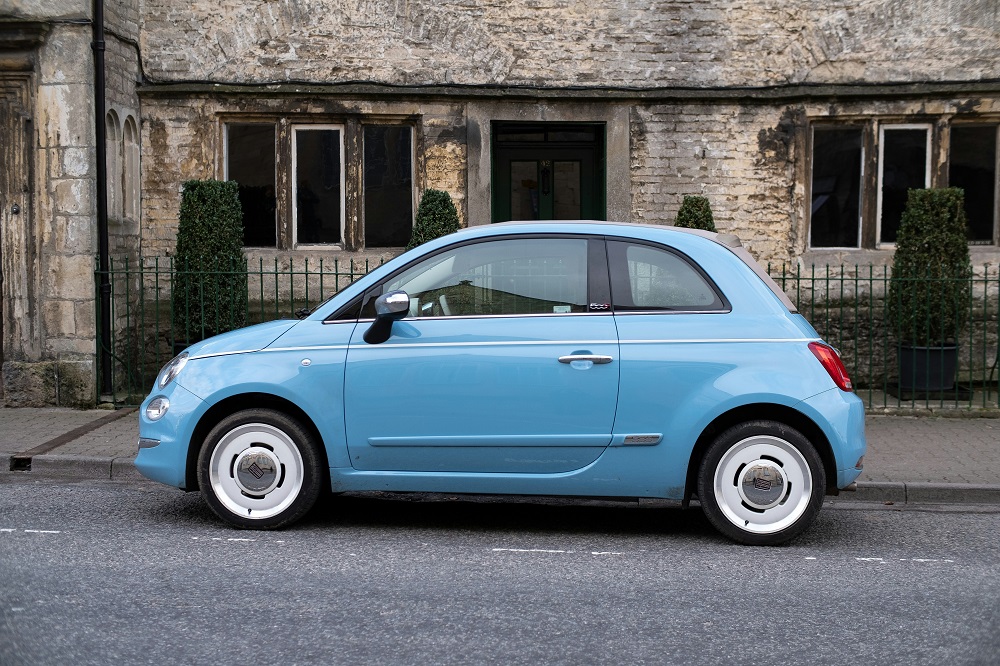Self driving cars: state of play in 2025

Self-driving vehicles are no longer science fiction in 2025. They exist. They move—albeit only in designated locations. And they stir controversy. As breakthroughs and accidents alternate, the road to autonomy is anything but straightforward.
But what exactly are we talking about when we say “self driving”?
What are self driving cars?
Autonomous vehicles, also referred to as self-driving cars, are vehicles that can drive themselves without human involvement—at least under certain conditions. They leverage a combination of sensors, artificial intelligence, and real-time data to drive, decide, and get from point A to point B.
They’re categorized according to SAE International’s Levels of Driving Automation, which go from Level 0 (no automation) to Level 5 (full autonomy). What’s on the market for most consumers today is at Level 2—partial automation. That’s when the car can steer, accelerate, and brake but needs to be monitored by a human being at all times.
Some more advanced prototypes, especially in ride-hailing fleets, reach Level 4, where the vehicle is doing all the driving within certain conditions or geofenced areas. Yet, no vehicle on public roads is fully autonomous to date.
How do self driving cars work?
They rely on a number of technologies put together:
- Lidar (Light Detection and Ranging): generates a 3D map of the environment using lasers.
- Radar: detects objects in the vicinity, their velocity, and location, particularly in low visibility.
- Cameras: read road signs, traffic lights, lane markings, and identify pedestrians.
- Ultrasonic sensors: used for short-range applications like parking.
- GPS + HD mapping: gives precise location and terrain information.
- AI + machine learning: interprets the world, predicts behavior, and makes driving decisions.
All this data flows to onboard computers that are sufficiently powerful to make decisions in milliseconds.
Different companies have different approaches. For example:
- Alphabet (Google’s parent)-owned Waymo uses lidar, radar, and detailed mapping. Their robotaxis operate without human drivers in parts of Phoenix and Los Angeles.
- Tesla, meanwhile, shuns lidar. It relies on camera-only vision and neural networks, and it calls its system “Full Self-Driving” (FSD). As of early 2025, it remains Level 2.
Good to know
Even the most advanced systems now on the market to consumers are driver assistance technologies. They require active attention and cannot legally replace a human driver.
Where are we in 2025?
Self-driving cars are no longer experimental. In 2025, they’re a daily reality in a handful of places—but still far from mainstream. Public fleets pioneer, with private ownership advancing selectively and slowly.
Autonomous driving vehicles in public transport and urban mobility
Cities around the globe are actively testing autonomous shuttles, especially for short-range urban transport. They operate on predetermined routes, typically at low speeds, and are supported by municipalities.
- In Barcelona, Renault and WeRide launched a driverless minibus offering free rides on a 2.2 km circular route1 in the city center. It’s one of the few European examples of a fully autonomous public vehicle running without a backup driver.
- In the UK, the SCALE project2 introduced autonomous shuttles in Solihull and Coventry, helping local authorities understand how AVs could fit into future public transport networks.
- At Zurich Airport, WeRide’s Robobus became the first autonomous shuttle service at a major European airport, transporting staff on a defined loop.3
Meanwhile, ride-hailing platforms continue their autonomous push:
- Waymo now operates robotaxi services in Phoenix and Los Angeles, with fully driverless rides available to the public.4
- Cruise, after a major safety incident in 2023, is cautiously restarting its operations under stricter regulatory conditions.5
- Lyft, in partnership with May Mobility, plans to launch autonomous rides in Atlanta and later Dallas in 2025.6
Although adoption is still limited to test zones and partnerships for now, these services point to the direction that shared mobility is taking in terms of broader autonomous adoption.
Autonomous vehicles for private ownership: still in the slow lane
In the case of private cars, the outlook is more guarded.
The majority of autonomous features in consumer cars are still Level 2 systems—driver assistance, not true autonomy. That even includes Tesla’s “Full Self-Driving,” which offers automatic lane changes and navigation on city roads, but still requires the driver to be fully alert.
The first genuine Level 3 systems—where the vehicle can take full control briefly—are available, but only on a few luxury models:
- Mercedes-Benz Drive Pilot, active in Germany and parts of the US (California and Nevada), works on highways under 40 mph.
- Honda’s Legend is certified Level 3, but only sold in limited quantities in Japan.
Why so slow? Cost, legal ambiguity, and public hesitation are major factors.
- Lidar and AI chips remain expensive, making full autonomy inaccessible for most drivers.
- Insurance and liability laws are still evolving.
- And despite all the marketing, people remain skeptical. A 2024 AAA survey revealed that 66% of Americans still don’t trust autonomous technology.9
What are the real benefits of self driving cars?
We’ve discussed technology, we’ve talked regulation, and we’ve seen that driverless cars are—well—making slow but steady turns. But let’s step back and ask the big question: Why the hype? What do driverless cars actually have to offer?
Less traffic, more flow
Among the pledges of autonomous tech is a more effective, more fluid traffic flow. Unlike human drivers, AVs are programmed to drive at constant speeds, avoid unnecessary stops, and respond calmly to situations as they unfold. No honking at red lights, no sudden lane-changing—just smooth movement.
Early research supports this theory. A 2024 study from the University of Michigan proved that even a small percentage of connected vehicles—approximately 6%—can significantly optimize traffic signal timing and reduce delays at intersections when information is shared with city infrastructure10.
Of course, results vary depending on the percentage of AVs on the road, how cities adapt infrastructure, and how well the vehicles communicate. But the trend is clear: autonomous and connected vehicles might just turn out to be handy tools to reduce urban congestion—if deployed smartly.
Fewer accidents
Safety is probably the strongest case for autonomous driving technology. Human error—distraction, fatigue, speeding, poor judgment—is a contributing factor in the vast majority of highway accidents.
According to long-standing research, including studies cited by the National Highway Traffic Safety Administration, driver-related behavior contributes to over 94% of accidents, though rarely as the sole cause11. More recent traffic safety voices, including the NTSB, have cautioned against attributing accident causes to merely “human error” without also considering road design, vehicle safety features, or infrastructure flaws.
Though we’re a long way from completely eradicating road risk, automation would be able to prevent many of the most avoidable and frequent crash situations.
Mobility for all
For the elderly, the disabled, or those who don’t—or can’t—drive, self-driving cars could be life-altering. Consider being able to drive to a doctor’s appointment, visit family, or just go shopping, without having to depend on another person.
In some cities, like Phoenix or Osaka, these benefits are already taking shape. In Japan12, even autonomous shuttle services are being experimented with for aging rural communities.
Greener transport
Autonomous cars aren’t necessarily electric, but most new AV projects are defaulting to electric. No need to teach a robot how to drive a stick shift. Throw in more efficient traffic flow and fewer idling engines, and the environmental impact could be drastically smaller.
Plus, AI-managed fleets can route more efficiently, bypass congestion, and eliminate wasteful mileage. That’s welcome news for cities aiming to reduce emissions—and for anyone fed up with circling the block for parking.
Good to know
Self-driving electric shuttles have been added to urban transportation systems in several pilot sites, helping cities achieve climate goals without the expansion of new highways or subways.
Smarter choices: rent instead of own
Let’s get real—owning an autonomous car in 2025 isn’t exactly a cakewalk. The technology is expensive, the regulatory landscape is still evolving, and unless you live in a pilot city, you probably won’t be able to use it to its full potential.
That’s where car rental continues to be one of the smartest methods of accessing cutting-edge features without the long-term commitment. Whether you are planning a business trip, a weekend away, or simply want to test the latest driving tech, rental companies like Europcar enable you to select vehicles with advanced driver assistance systems—like lane keeping, adaptive cruise control, and traffic jam assist.
And as auto-pilot features become more prevalent, you’ll be able to find them in more and more readily available rental options—from compact city models to high-end SUVs, and even electrics.
What to remember
- Autonomous mobility is a reality already, especially in urban environments: shuttle buses, airport shuttles, and robotaxi services are live in different places worldwide.
- Private autonomous cars must still be supervised, with the majority of models offering high-level support but not complete autonomy.
- Safety and regulation remain the primary roadblocks, but city and manufacturer level advances creep forward.
- The benefits are concrete: fewer accidents, better accessibility, smoother traffic, and cleaner mobility.
- You don’t need to buy to test it—renting a vehicle with the latest driving technology is a smart, flexible way to find out what’s on the market now..
Tomorrow’s driving experience is already here—just not everywhere, and not all at once. But it’s coming.
Sources :
1 : https://apnews.com/article/6d4e53b90690f3217445d3744a366615
2 : https://solihullobserver.co.uk/news/driverless-shuttle-buses-goes-live-in-solihull
3 : https://www.nasdaq.com/articles/weride-inc-launches-first-autonomous-shuttle-service-zurich-airport
4 : https://waymo.com/waymo-one-los-angeles/
6 : https://autonomous.lyft.com/
7 : https://motorsactu.com/mercedes-benz-drive-pilot-desormais-certifie-dans-letat-de-californie
9 : https://www.ft.com/content/f2eaa452-4772-4929-9317-69bc7b53ff2c


